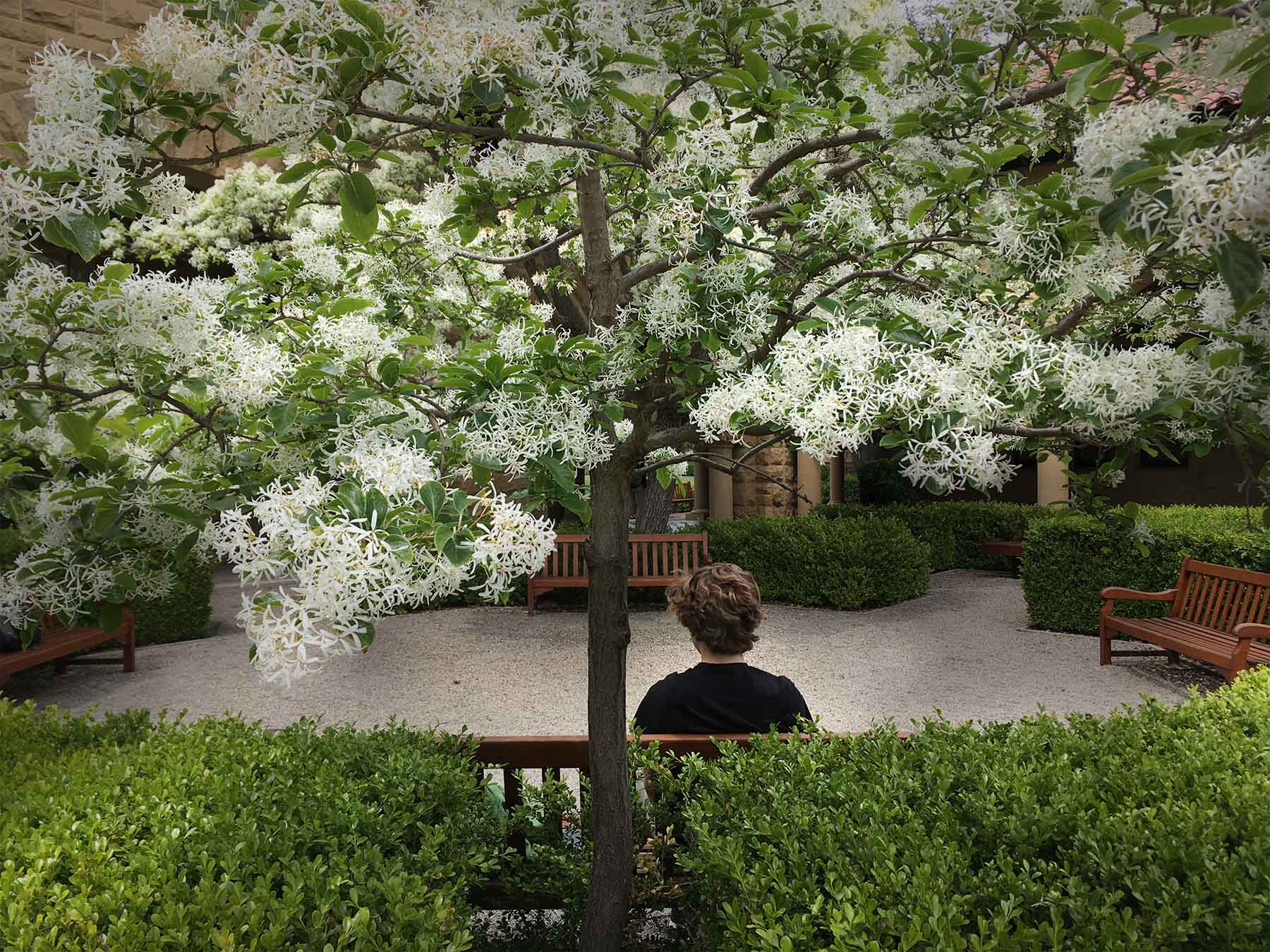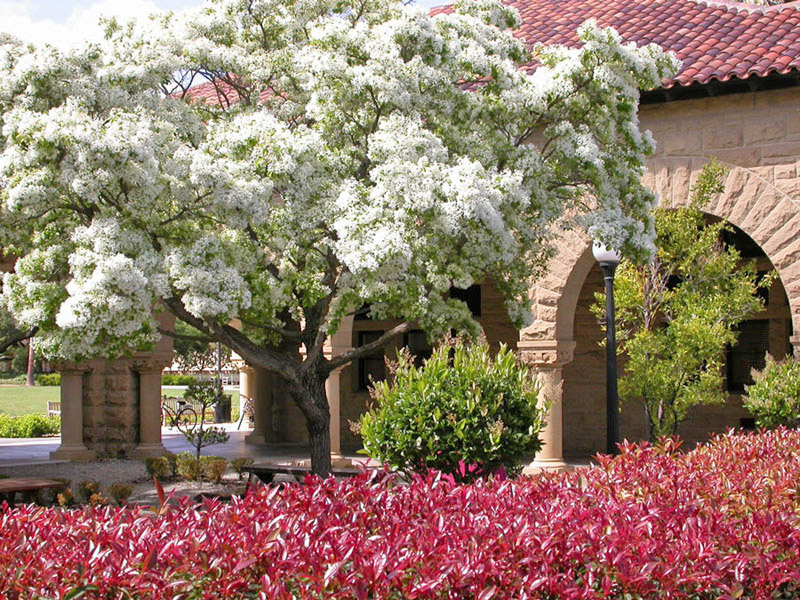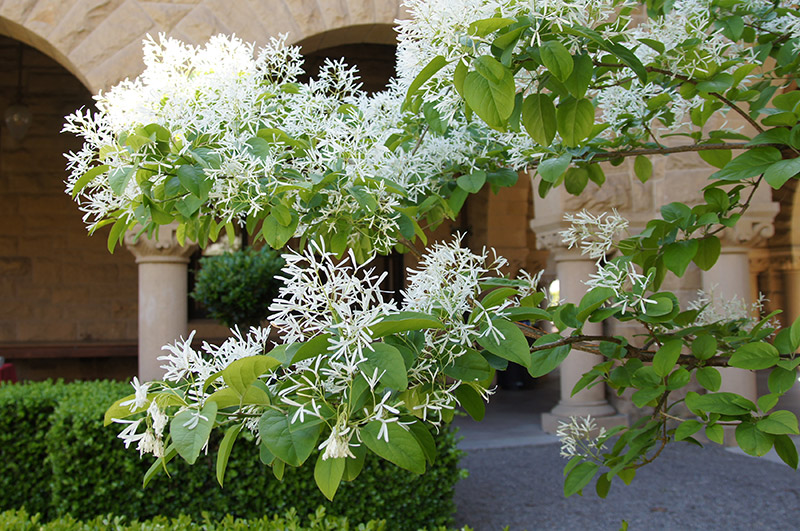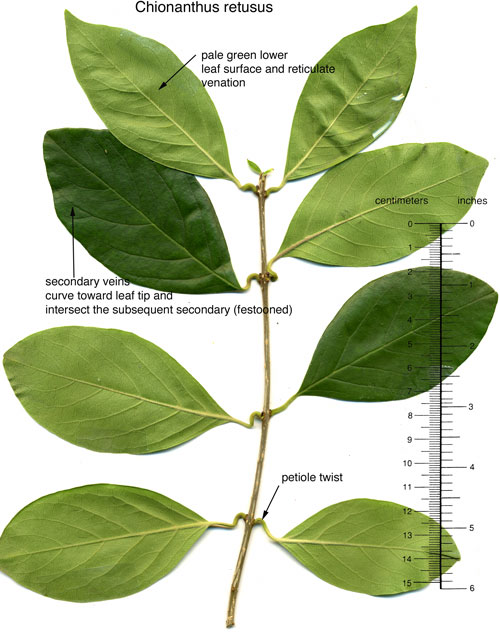Chionanthus retusus
 Chinese fringe tree
Chinese fringe tree

A very attractive group of four fringe trees planted in 1968 graced the secluded patio, designed by Thomas Church, north of the southwest corner of the Main Quad, off Lomita Mall. Over the decades they have been assiduously replaced as needed, the current quartet being relatively young and not yet of majestic stature. By early April they are in flower, the long narrow petals having a very charming appearance. The fruits are dark-blue oval berries borne in terminal clusters, though some trees have only male flowers.
Following the success of that popular planting, many more Chinese fringe trees have been installed. By 2001, 11 new specimens about 20 feet tall were flowering in the courtyard behind Sequoia Hall, but did not bear fruit. Five are at the entrance to Forsythe Hall; fruit has been seen on at least three of them. Three are at the southwest corner of Panama Mall and Lomita Mall, and four more flank the main entrance to Schwab Residential Center. A pair can be seen at 579 Alvarado Row. Most recently, specimens have been planted in the Outer Quad courtyards behind Math Corner and Wallenberg Hall, continuing the theme from the Thomas Church garden. These semi-enclosed spaces allow their delicate fragrance to be best appreciated.
Past specimens:
In 1998 one of the four in the Thomas Church courtyard was replaced by a vigorous tree (with a plaque for Ruth Sloan) bearing berries ⅝ inch in diameter and ⅞ inch long and containing a stone almost as big. It died in 2003, and was subsequently replaced. A row of five on the south side of Gravity Probe B (west side of Via Palou Mall) produced copious fruit looking like bunches of small grapes, but were taken down when the building itself was demolished in preparation for the Science and Engineering Quad in early 2006. Several specimens on the south side of Mudd Chemistry were removed in 2016 due to construction.
Also see:
- 28 Feb 2000. Cardinal Chronicle: Thomas Church. Stanford Report. “In late spring, Chinese fringe trees blossom into a spectacular show of white flowers in Geology Courtyard behind Building 320.”
- Jan/Feb 2003. He Changed the Landscape. Raymond Hardie, Stanford Magazine. “The campus was overrun with automobiles and ‘backyard junk.’ Then Thomas Church came along and dreamed up a peripatetic’s paradise.”
About this Entry: The main text of this entry is from the book Trees of Stanford and Environs, by Ronald Bracewell, published 2005. All locations updated and Gravity Probe & Mudd removals noted; Panama & Lomita location added (Apr 2018, SP). Edits (Apr 2024, SP).







